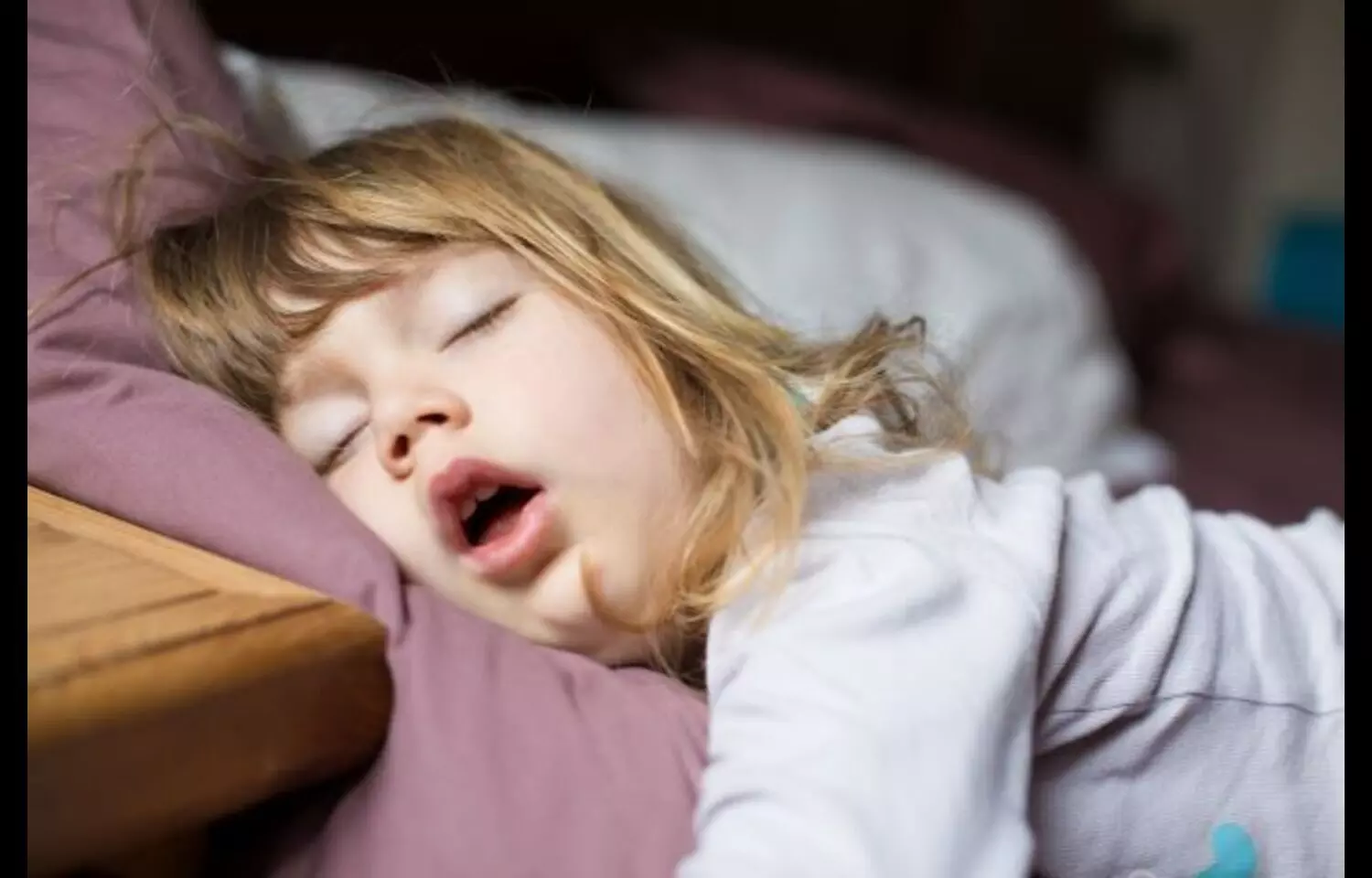Mouth Breathing Linked to Sleep-Disordered Breathing in Children, finds study
- byDoctor News Daily Team
- 11 September, 2025
- 0 Comments
- 0 Mins

Sleep-disordered breathing (SDB) in children is a common but often underdiagnosed condition that can impact growth, behavior, and long-term health. Identifying modifiable risk factors is therefore critical. A new study published inFrontiers in Pediatricshas highlighted a strong association between mouth breathing and sleep-disordered breathing in school-aged children, pointing toward the importance of early detection and intervention. The study evaluated school-aged children for breathing patterns, sleep symptoms, and clinical indicators of airway obstruction. Researchers found that children who habitually breathed through the mouth had a markedly higher risk of developing Sleep-disordered breathing compared to those who primarily breathed nasally. Mouth breathing was associated with increased rates of snoring, restless sleep, and observed breathing pauses during the night, which are hallmark features of Sleep-disordered breathing. Importantly, the link between mouth breathing and Sleep-disordered breathing persisted even after accounting for confounding variables such as age, sex, and body mass index. This suggests that mouth breathing itself is an independent risk factor for sleep-related breathing disorders. Researchers emphasized that chronic mouth breathing may reflect underlying nasal obstruction, enlarged tonsils or adenoids, or allergic rhinitis, which in turn contribute to airway collapse during sleep. The findings underscore the need for pediatricians, dentists, and caregivers to pay closer attention to children’s breathing habits. Simple screening for habitual mouth breathing in school-aged children could serve as an early marker for those at risk of Sleep-disordered breathing, facilitating timely referral for further evaluation and management. Researchers concluded that targeted interventions—such as managing nasal obstruction, orthodontic evaluation, or adenotonsillectomy in select cases—may help reduce the burden of Sleep-disordered breathing in children. However, they also cautioned that longitudinal studies are required to better understand causality and the long-term outcomes of early intervention strategies. Overall, the study provides strong evidence that mouth breathing is not a benign habit but a clinically relevant marker of potential sleep-disordered breathing, highlighting the importance of early recognition in improving pediatric health outcomes.
Disclaimer: This website is designed for healthcare professionals and serves solely for informational purposes.
The content provided should not be interpreted as medical advice, diagnosis, treatment recommendations, prescriptions, or endorsements of specific medical practices. It is not a replacement for professional medical consultation or the expertise of a licensed healthcare provider.
Given the ever-evolving nature of medical science, we strive to keep our information accurate and up to date. However, we do not guarantee the completeness or accuracy of the content.
If you come across any inconsistencies, please reach out to us at
admin@doctornewsdaily.com.
We do not support or endorse medical opinions, treatments, or recommendations that contradict the advice of qualified healthcare professionals.
By using this website, you agree to our
Terms of Use,
Privacy Policy, and
Advertisement Policy.
For further details, please review our
Full Disclaimer.
Recent News
What Your Neck Size Says About Your Heart Health?...
- 04 November, 2025
EVOQUE TTVR Delivers Promising Real-World Results:...
- 04 November, 2025
Influenza Vaccination Reduces Mortality and Readmi...
- 04 November, 2025
Can Technology Make Kids Healthier? New Research S...
- 04 November, 2025
Daily Newsletter
Get all the top stories from Blogs to keep track.


0 Comments
Post a comment
No comments yet. Be the first to comment!